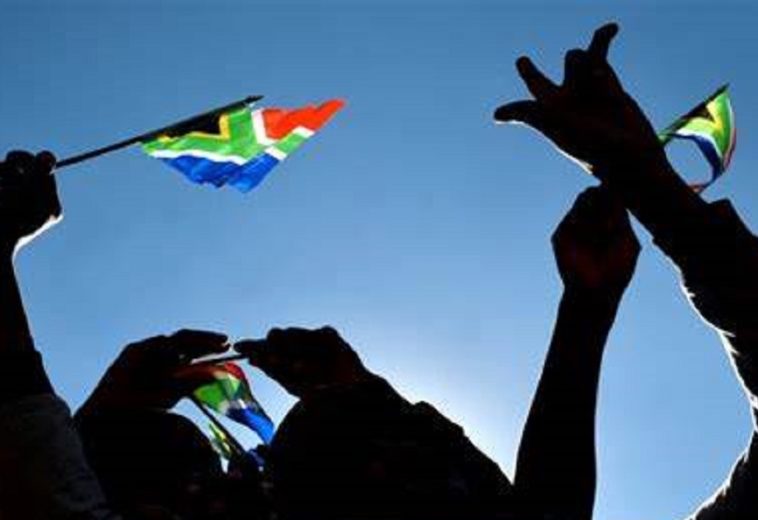Akpotutari, a 14-year-old girl from a rural community in Nigeria, dreams of becoming a doctor. She studies in the evenings, despite the limited electricity in her village. Like many girls in Africa, she faces significant challenges—poverty, cultural norms, and restricted access to education—that threaten her ambitions. Yet, her hope and determination remain steadfast. “I want to help people. I want to save lives,” she says quietly but resolutely. Akpotutari’s vision mirrors the dreams of millions of girls around the world who envision a future where their voices are heard, and their rights are upheld.
On 11th October, we observe the International Day of the Girl Child, a day dedicated to reflecting on the issues that affect girls globally. The theme for 2024, Girls’ Vision for the Future, highlights the strength of girls’ voices and calls for urgent action to tackle the challenges they face. This theme represents a global call to protect girls’ rights, ensure their access to education and healthcare, and empower them to become leaders in their communities and the wider world.
A Brief History of the International Day of the Girl Child
The journey towards recognising girls’ rights has been long and arduous. The Beijing Declaration and Platform for Action, adopted at the Fourth World Conference on Women in 1995, was the first international agreement to specifically address girls’ rights. This landmark document emphasised the need to eliminate discrimination and violence against girls and promote their equal access to education, healthcare, and opportunities.
In recognition of the distinct challenges faced by girls, the United Nations General Assembly, on 19th December 2011, adopted Resolution 66/170, officially designating 11th October as the International Day of the Girl Child. The day was established to raise awareness of struggles such as child marriage, gender-based violence, and lack of access to education, while also celebrating girls’ potential to build a better future.
The Challenges Facing Girls Globally
Despite progress, girls across the globe continue to face numerous obstacles. According to UNICEF, more than 130 million girls worldwide are out of school, with Africa being particularly affected. Barriers to education, including poverty, cultural norms, early marriages, and the lack of sanitary facilities in schools, disproportionately affect girls.
In sub-Saharan Africa, one in three girls is married before the age of 18, which truncates their education and entrenches cycles of poverty and inequality. Child marriage denies girls their right to education and increases their vulnerability to domestic violence and health complications, including early pregnancies.
Gender-based violence remains a pervasive problem. According to UN Women, one in three women globally will experience physical or sexual violence in her lifetime, with girls particularly vulnerable. Many girls are subjected to harmful practices such as female genital mutilation (FGM), which affects over 200 million women and girls worldwide, particularly in African countries.
The Power of Education and Girls’ Voices
Education remains one of the most powerful tools for empowering girls and breaking the cycle of poverty and inequality. Malala Yousafzai, the youngest-ever Nobel Prize laureate, once said, “One child, one teacher, one book, one pen can change the world.” This quote encapsulates the transformative power of education, especially for girls. When girls are educated, they are more likely to delay marriage, have healthier children, and contribute to the economic growth of their communities.
In recent years, girls themselves have become powerful advocates for their rights. From Greta Thunberg, a global voice for climate change, to Mari Copeny (also known as “Little Miss Flint”), who advocates for clean water in the United States, girls are leading movements that challenge the status quo. In Africa, young activists like Memory Banda from Malawi have been at the forefront of campaigns to end child marriage, using their voices to demand change and a brighter future.
The Way Forward: Urgent Action for a Better Future
The 2024 theme, Girls’ Vision for the Future, calls for immediate action to ensure that girls’ dreams are not obstructed by systemic barriers. Governments, civil society, and communities must work together to tackle the root causes of gender inequality and invest in programmes that uplift girls.
In Africa, efforts to promote girls’ education and rights are gaining momentum. Rwanda, which boasts the highest proportion of women in parliament globally, serves as a model for promoting gender equality. Rwanda’s success shows that when girls are given the tools and opportunities to succeed, they can become powerful agents of change.
However, significant challenges remain. According to the Global Education Monitoring Report, sub-Saharan Africa has the highest rates of exclusion from secondary education, with 49% of girls not attending school. This highlights the need for increased investment in education, particularly in rural areas where girls face the most barriers to accessing quality learning.
Celebrating Girls’ Potential
As we celebrate the International Day of the Girl Child, we must remember that investing in girls is not just a moral obligation; it is about building a better, more equitable future for all. When girls are educated, healthy, and empowered, entire communities benefit. The World Bank estimates that closing the gender gap in education could generate an additional $112 to $152 billion annually for low- and middle-income countries.
Empowering girls is also essential for achieving the Sustainable Development Goals (SDGs), particularly those related to poverty eradication, gender equality, and quality education. As UN Secretary-General António Guterres has stated, “When we invest in girls’ education and health, we are investing in peace, prosperity, and progress for all.”
A Call to Action
The International Day of the Girl Child reminds us of the immense potential that lies within every girl. Fatima’s dream of becoming a doctor is not just her personal aspiration; it represents the hopes of millions of girls worldwide. It is our collective responsibility to ensure that these dreams are not stifled by barriers of inequality, violence, or discrimination.
As we mark this year’s theme, “Girls’ Vision for the Future,” let us commit to creating a world where every girl has the opportunity to thrive. This means taking concrete steps to end child marriage, ensure access to education, and promote the health and well-being of girls everywhere. Only then can we truly unlock the transformative power of girls’ voices and vision for the future.




